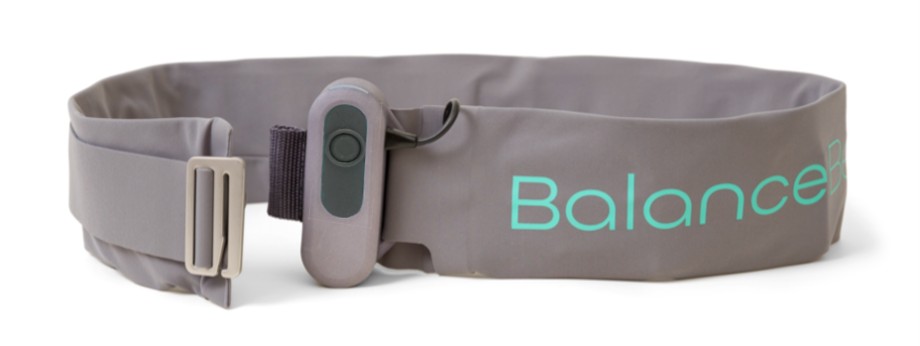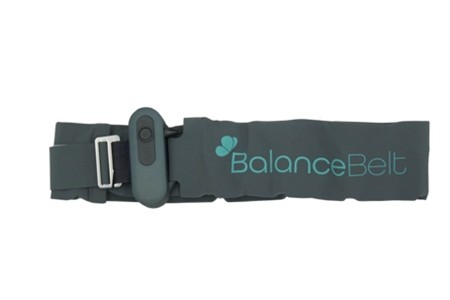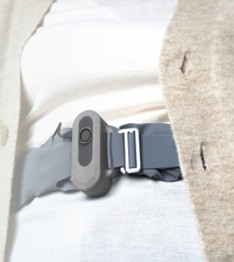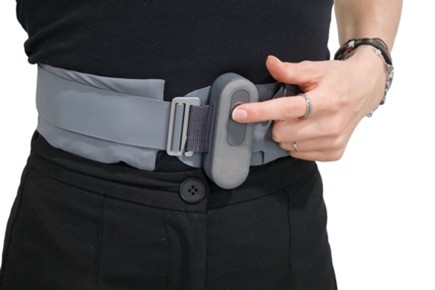
If you live with balance issues, you are not alone. Many people experience chronic dizziness or instability due to conditions such as Ménière’s disease, Bilateral Vestibular Loss (BVL), Unilateral Vestibular Loss (UVL) or Persistent Postural-Perceptual Dizziness (PPPD).
These vestibular disorders can have a serious impact on daily life - making walking, standing, or even moving around the home feel daunting.
But there is hope.
The BalanceBelt is an innovative, non-invasive medical device designed to help improve balance in people with vestibular conditions. Worn discreetly around the waist, it uses gentle vibrations (known as haptic feedback) to support the brain’s sense of balance. The result: greater stability, improved confidence, and increased independence.
 Stephanie Steggehuis, a young BVL patient, shares:
Stephanie Steggehuis, a young BVL patient, shares:
“I’ve been using the BalanceBelt for a few months now, and I feel more stable when I walk. This belt didn’t just help my balance—it helped me feel safe in my body again.”
How Does the BalanceBelt Work?
The BalanceBelt continuously monitors your body position and uses subtle vibrations to signal changes in posture and movement. This provides the brain with additional sensory input—similar to what the inner ear usually supplies. In people with reduced or lost vestibular function, these signals help compensate for the missing information, leading to better balance and spatial awareness.
The BalanceBelt has proven to be particularly promising for:
- Bilateral Vestibular Loss (BVL) - where both inner ears are affected
- Unilateral Vestibular Loss (UVL) - where only one side is affected
- Persistent Postural-Perceptual Dizziness (PPPD) - a long-term dizziness disorder often triggered by an earlier vestibular event
 Sue Hamilton (UK), another patient, says:
Sue Hamilton (UK), another patient, says:
“The day after receiving the BalanceBelt my husband and I spent two sunny days on the west coast of Scotland, where the terrain is like this – boggy, uneven, rocky outcrops, and stony beaches. I seemed suddenly to have the confidence to tackle it all! I’m a very contented new user.”
What About Ménière’s Disease?
Ménière’s disease causes episodes of vertigo, hearing loss, tinnitus, and a feeling of pressure in the ear. While the BalanceBelt has not yet been specifically studied for Ménière’s, some patients may find that it offers extra support and stability - especially during periods of imbalance.
Is BalanceBelt Right for You?
If you are dealing with balance problems, the BalanceBelt could be the solution you have been searching for. Check out the test on the BalanceBelt website to see if the BalanceBelt might be beneficial for you.
A Definitive Treatment
While the BalanceBelt does not cure vestibular disorders, it can be very beneficial if vestibular rehabilitation does not improve your balance sufficiently. It offers patients an additional layer of support in their day-to-day lives. For many, this means reduced fear of falling, greater mobility, and a better quality of life.
Availability in the UK
While the BalanceBelt is not funded nationally, all NHS Trusts in the UK may contract and prescribe the BalanceBelt for their patients. An increasing number of Trusts are already supporting patients with this innovative treatment.
For more information or to discuss if the BalanceBelt could help with your symptoms, contact us today! Visit the BalanceBelt website www.balancebelt.net or contact by email: info@balancebelt.net



You should always consult your health professional (GP/Consultant) for guidance before you begin, change, temporarily suspend or discontinue any treatment, procedure, medication, exercise or diet. The Ménière's Society does not make recommendations and cannot advise on individual cases nor accept any liability resulting from the use of any treatments, methods or procedures referred to on this website.
Back to top